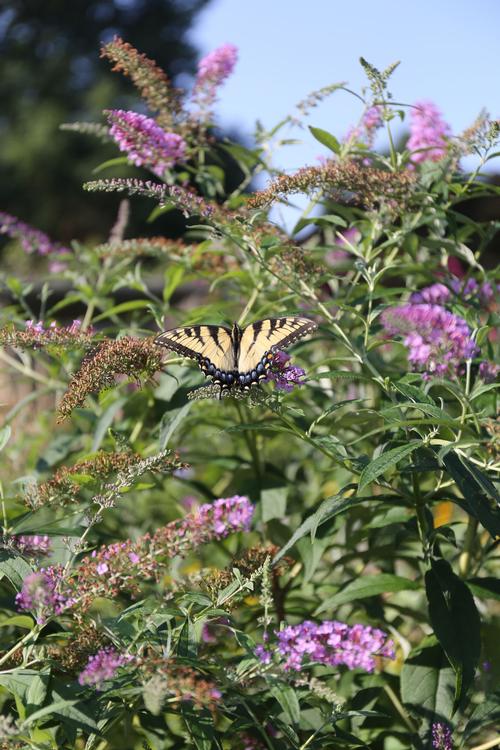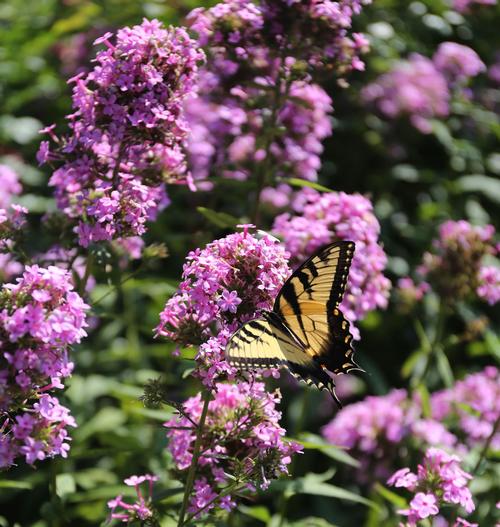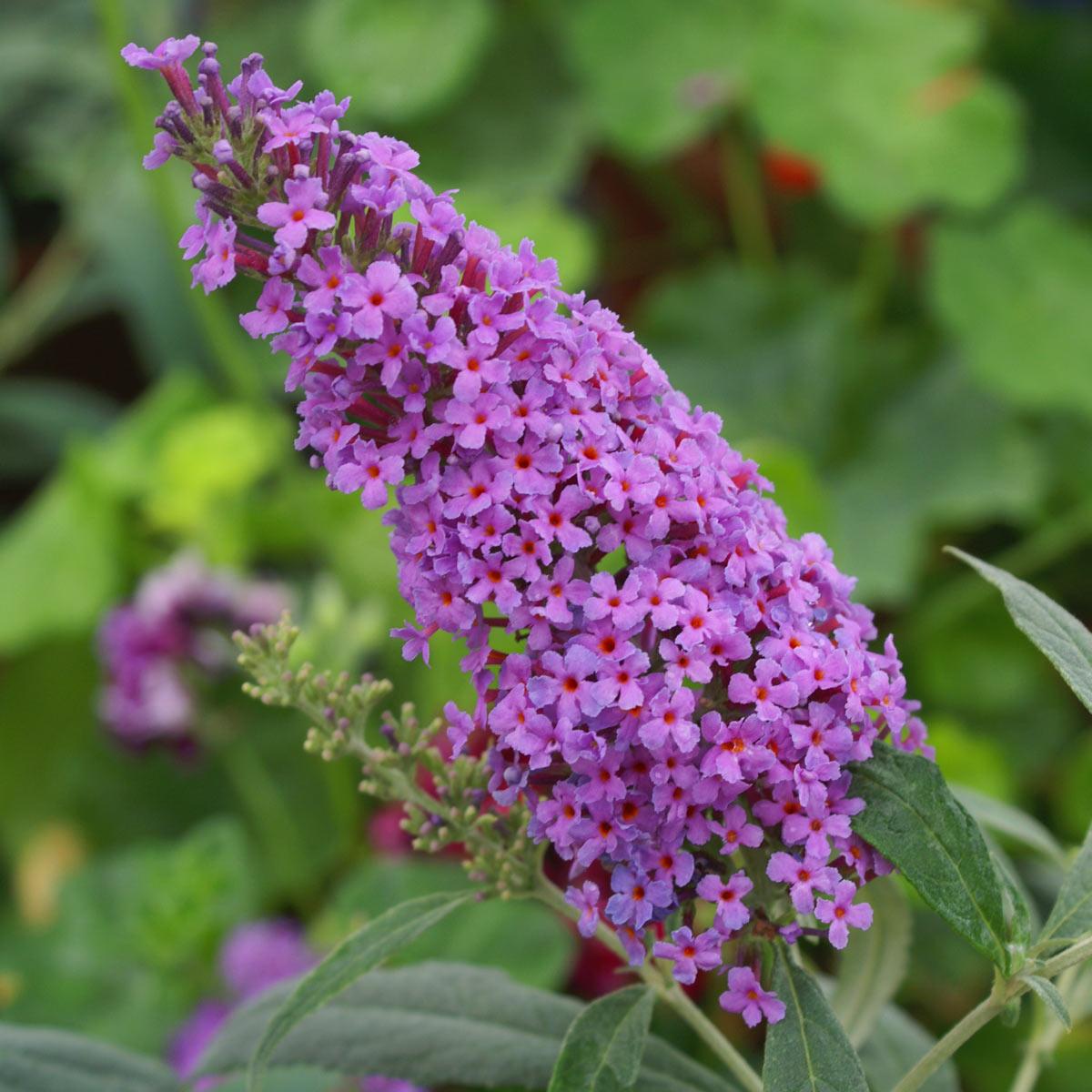Your Guide to Planning, Planting, and Growing Buddleia
Buddleia (or buddleja) are flowering shrubs that produce colorful flowers in late summer and fall. Their distinctive blossoms are displayed in long panicles at the end of the branches. Commonly known as butterfly bush, the flowers have a honey-like fragrance and are rich in nectar. This makes them highly attractive to butterflies and hummingbirds, moths, bees, and other beneficial insects.
There are many different cultivars of buddleia, and flower colors range from white and yellow to orange, pink, violet and purple. In the past, buddleia were only available as tall plants with an average height of 7 feet or more. Plant breeders are now introducing many shorter cultivars that are easier to accommodate in the average home garden.
Some cultivated species of buddleia, including Buddleia davidii, are banned in parts of the U.S. because the plants can self-sow and be invasive. Fortunately, many of the newer hybrids do not produce viable seeds.

Plan for Success
Sun and Shade: Buddleia should be planted in full sun. This means an area in your yard that receives at least 8 hours of bright light per day. In southern areas, some morning or afternoon shade is fine as long as the plants get at least 6 hours of sun.
Soil Conditions: Like many plants, the roots of buddleia will not tolerate wet soil – especially during the winter months. Make sure to choose a planting location where the soil is very well drained.
Hardiness: Winter hardiness ratings vary by cultivar, so it’s important to check the plant label. Most buddleia are hardy in zones 5-10. In zone 5, the plants may die back to the ground most winters but will usually grow back quickly and flower on schedule.

Where to Plant Buddleia
Since buddleias range in height from 1 to 9 feet, it's important to select the right cultivar for the space. Full size plants such as Black Knight can be planted against a fence or among other shrubs. Mid-size cultivars such as Buzz Sky Blue are excellent for the back of a perennial border. Dwarf varieties such as Buzz Magenta are good for landscaping and containers.
How to Plant Buddleia
Before planting, loosen the soil in the planting area to a depth of at least 12”. Dig a hole and position the plant so the crown (where the stem meets the roots) is at least an inch above the normal soil level. Fill the hole and then mound some of the soil up around the crown to create a small hill that slopes away from the plant. This will encourage water to drain away.
During the plant’s first summer, water weekly or as needed to ensure the roots don’t dry out. By the end of the growing season, your buddleia should be well established and need little attention.

What to Expect
Buddleia usually bloom continuously throughout late summer and fall, stopping only with the first frost. Removing spent flowers will keep the plant looking neat and encourage additional blossoms. To deadhead, cut the stem back to the first set of leaves, several inches below the flower.
Like lilacs and many other flowering shrubs, buddleia perform best when they are pruned annually. The best time to prune most buddleia is in early spring, once you can see green buds on the stems. Be patient, as the plants wake up slowly and may not start to leaf out until well into June.
Once they do start growing, buddleia grow vigorously and will quickly recover from pruning.

How to Care for Buddleia
To maintain the size of an established plant, you can cut some stems back to the ground and reduce the length of others by about half. Flowers are produced at the ends of the stems, so spring pruning also helps keep the blossoms closer to eye level, where they are easier to enjoy. Even dwarf cultivars should be pruned modestly. Note that Buddleia alternifolia and Buddleia globosa bloom on prior year stems and should be pruned in midsummer rather than in spring.
In addition to reducing the length of the stems, take time to also remove any dead branches, cutting them back to the main trunk. Thin out crossing branches and thin, twiggy growth. When possible, make the pruning cuts just above a bud or shoot.

